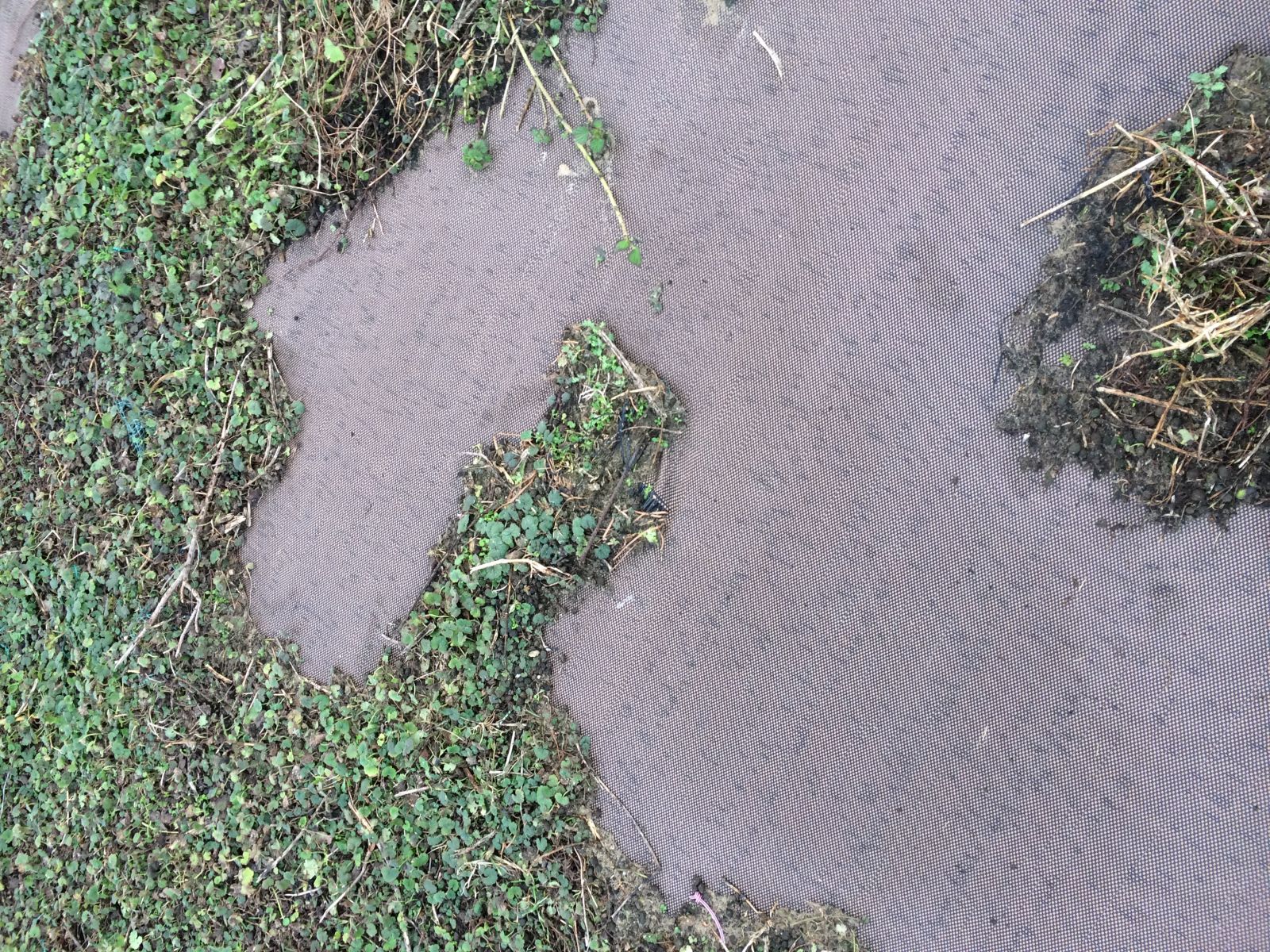Duracover - Biodegradable ground cover against Japanese Knotweed
Everywhere in Europe, the fight against the invasive Japanse Knotweed or Polygnom is ongoing. Knotweed or Polygonum is a herbaceous plant of about 2 to 3 m high, native to eastern Asia and naturalized in Europe in the 20th century. This plant represents a real danger to biodiversity and is spreading at lightning speed.
Since 2011, within the context of the Grenelle de l’Environnement (the French environment summit), the fight against invasive species has been stepped up. The fact is that these plants represent a real danger to biodiversity, and that is particularly the case of the Japanese Knotweed or Polygonum, which is an herbaceous plant 2 to 3 m high, native to eastern Asia and that was naturalized in Europe in the 20th century. The plant propagates by dissemination of the seeds and especially through the development of rhizomes that grow on the surface of the soil. It thrives in wet and harsh environments (roadsides, watercourses, brownfield sites,…). The stems die in winter and only the root system remains.
Photo 1: when the vegetation starts growing again, the development of the Polygonum is visible under the ground cover (undulating effect).
Testing site in Pas de Calais
In the Pas de Calais (North of France), at the Dune de la Slack, test have been conducted to fight against its proliferation. The project was adopted the initiative of the Joint Association: EDEN 62 (Natural Areas of the Département of the Pas de Calais), whose mission is, among other things, to manage the sensitive Natural Spaces. To preserve the environment, it was decided to apply the ground cover technique using Duracover, a biodegradable product of 100% plant origin (corn starch). This cover is airtight, but still preserves water permeability. When the vegetation starts growing again, the development of the Polygonum is visible under the ground cover (undulating effect). The plant pushes against the surface of the sail. The activity is visible for around 1 month and then the knotweed weakens due to a lack of light and subsides. The ground cover recovers its initial shape (photo 1). After 3 years, we observe a recolonization of the webbed ground cover by the sand the local vegetation. The roots underneath the cover die and no Polygonum regrowth is observed (photo 2).
Photo 2: After 3 years, we observe a recolonization of the webbed ground cover by the sand the local vegetation. The roots die and no Polygonum regrowth is observed.
Protocol
In winter, after cutting the weed down as close as possible to the round and its evacuation to a site specialized in high temperature composting, the mulching fabric is then stretched over the area and buried along its edges in trenches 60 to 80 cm deep.
Then everything is ballasted with wood and sandbags along the entire length of the cover (overlap between widths of around 30 cm). Particular attention must be given to take the prevailing winds into consideration.


